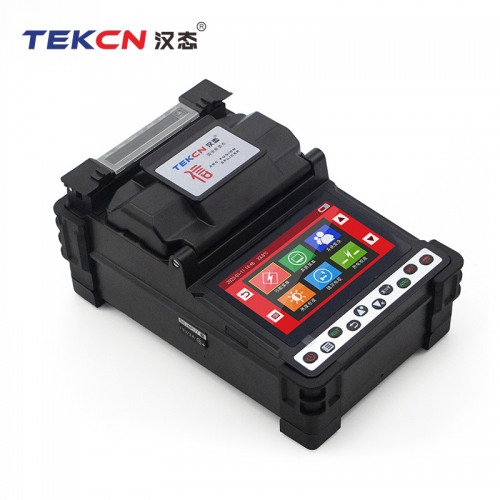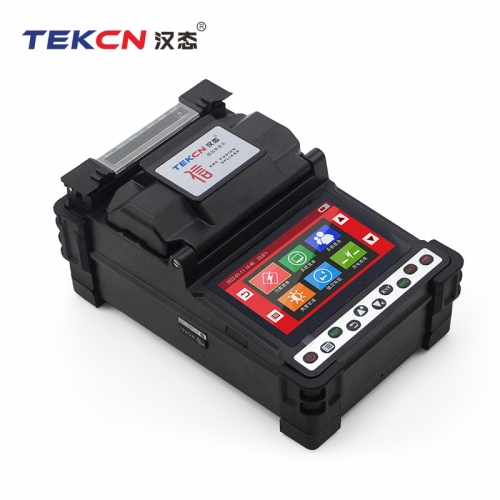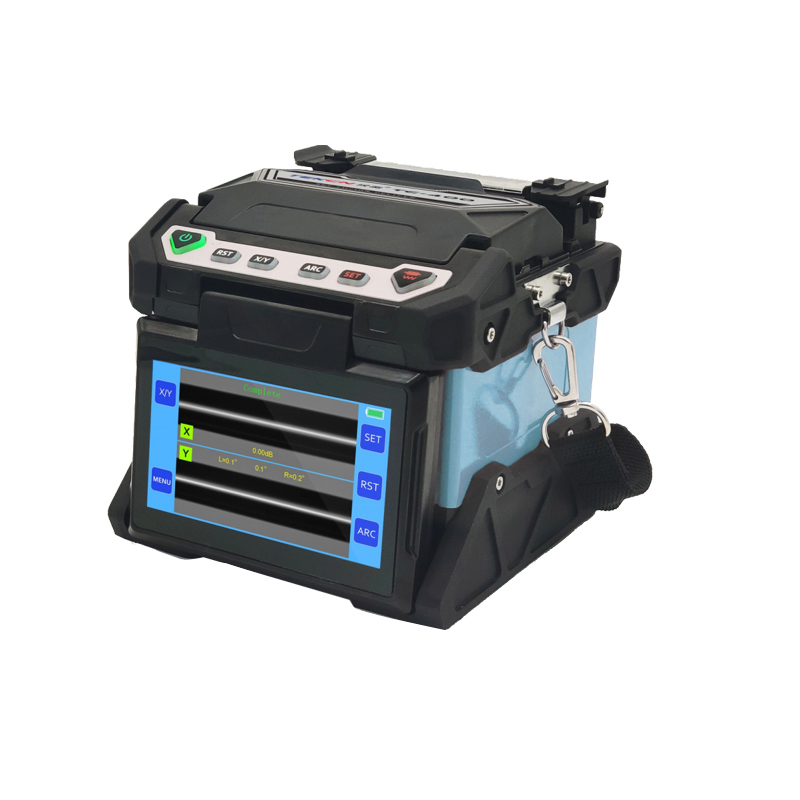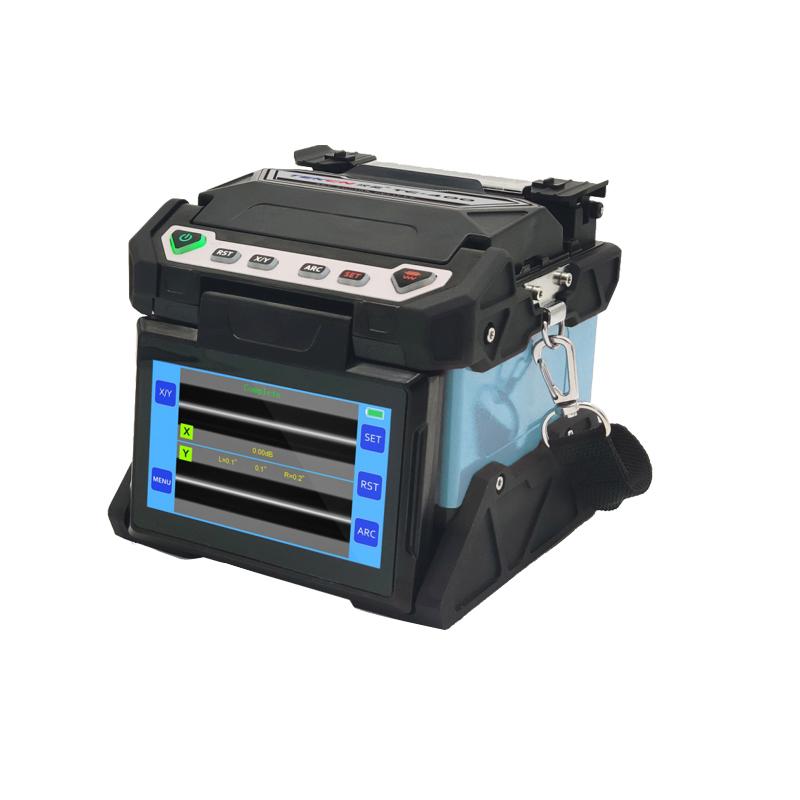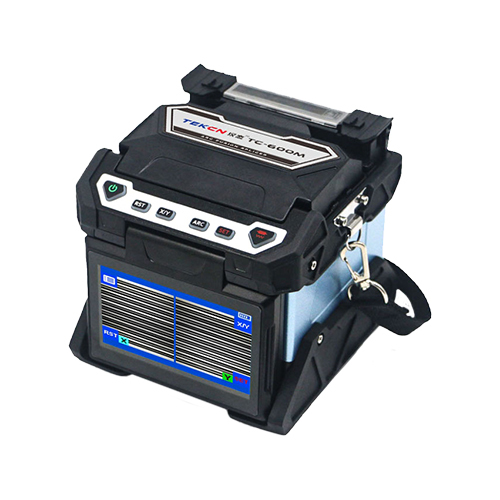How to Choose a Right Fusion Splicer?
The fusion splicer is used for splicing two optical fibers end-to-end by fusion. It is an indispensable tool for fiber OSP and indoor cable network installation. There are many models of fusion splicers available, varying in features and capability and cost. With hundreds of options to choose from, this task can become very difficult in choosing the right splicer for the job. In this article, we will discuss about how to find the best fusion splicer for your application in the following aspects.
SINGLE FIBER FUSION SPLICER VS. RIBBON FUSION SPLICER
Single fiber splicers and ribbon splicers are two main types fusion splicers in the market. You should choose the right one from them according to your specific applications.
Single Fiber Fusion Splicer
Single fiber splicers usually splice 250 micron fiber, but can also hold 900 micron jacketed fiber, flat drop cable and splice on connectors (also known as splice-on-connectors) used mostly for FTTH applications as well. One piece of fiber is stripped, cleaned, cleaved then inserted into the fiber holder. Another fiber repeats the same process to lay in the opposite fiber holder. Most newer single fusion splicer models can splice in less than ten seconds and estimate attenuation (loss of light). Of course this is only an estimation and the fiber should be tested more accurately with an OTDR.
| TEKCN TC-400 Single Fiber Fusion Splicer | Super x Single Fiber Fusion Splicer |
|---|---|

|
Ribbin Fusion Splicer
Ribbon splicers can splice 1 to 12 fibers all at once. The fiber holders determine the number of fibers you can splice at once. Mass splicers are not nearly as popular as the single fiber splicers, but if used on cable where more than one fiber needs to be spliced they are extremely efficient. When fiber counts of over 96 are needed, there can be up to a 60% savings on per splice costs. Let’s say on average a single fiber splice costs $10 and a ribbon splice is $50 each. At a location that needs 144 splices, the single fiber splicer would run a cost of $1400. A ribbon splicer would only perform 12 splices at a total of $600. The following picture is a COMWAY C10R Ribbonfusion splicer.
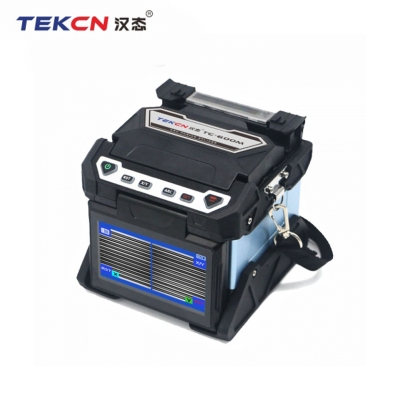
CORE ALIGNMENT FUSION SPLICER VS. CLADDING ALIGNMENT FUSION SPLICER
Currently, there are two aligning system used for fusion splicer which is core alignment system and cladding alignment system.
Core Alignment Fusion Splicer
Core alignment splicing is currently the most commonly used fusion splicing technology. Core alignment splicers use a combination of image and light detection systems that “view” the fiber cores to measure and monitor core position during the alignment process. This provides for precise fiber alignment, resulting in a typical splice loss of only 0.02dB. Compared to cladding alignment, it is more expensive, more powerful and flexible, and less sensitive to variations in the cable and environment. Core alignment fusion splicers have long been the preferred method for CATV installations, backbone networks, specialty fiber applications, and optical components manufacturing largely because of their high accuracy and reliability.
Cladding Alignment Fusion Splicer
More basic fusion splicers employ clad alignments to line up the fibers for splicing. The fibers sit in a holder or V-groove and are lined up “physically”, based on the outer diameter of the fiber’s cladding. Fiber cores are adjusted inwards and outwards. The advantage of this method is that the technology required is low cost and fast alignment and splicing, so it is still utilized on low-cost field fusion splicers and ribbon splicers. However, since the outer diameters are aligned doesn’t mean the cores will be perfectly aligned. Cladding alignment splicers typically produce higher loss splices and lack the features and flexibility of higher end splicers. The following picture is a Fujikura 22S cladding alignment fusion splicer.
OTHER CONSIDERATIONS FOR CHOOSING THE RIGHT FUSION SPLICER
In addition to the two points mentioned above, there are also other common senses about fusion splicers, which may also help you make the decision. In the market, the famous brands for fusion splices are Fujikura, Sumitomo and Furukawa from Japan, COMWAYFROM USA ,INNO and Ilsintech from Korea and Jilong from China. Among them, Fujikura is the best over the world with high price. Usually, the price for Japanese fusion splicer is over 7000 dollars, for Korean fusion splicer is over 5000 dollars and for Chinese fusion splicer is over 3000 dollars. So far, New Sumitomo TYPE-82C Fusion Splicer has the fastest welding speed.
上一篇:没有了
下一篇:没有了


